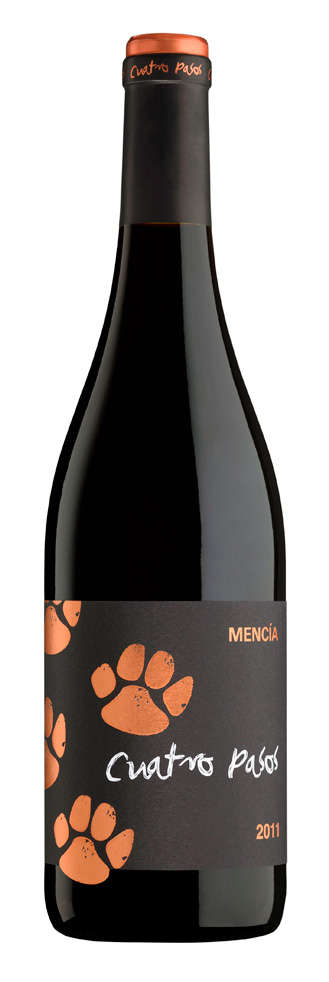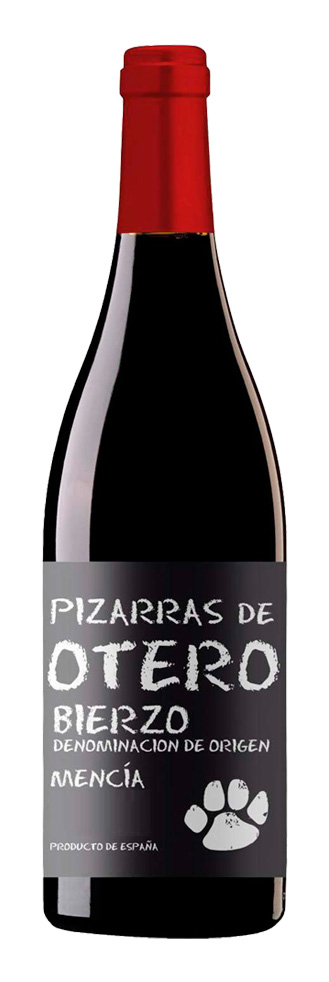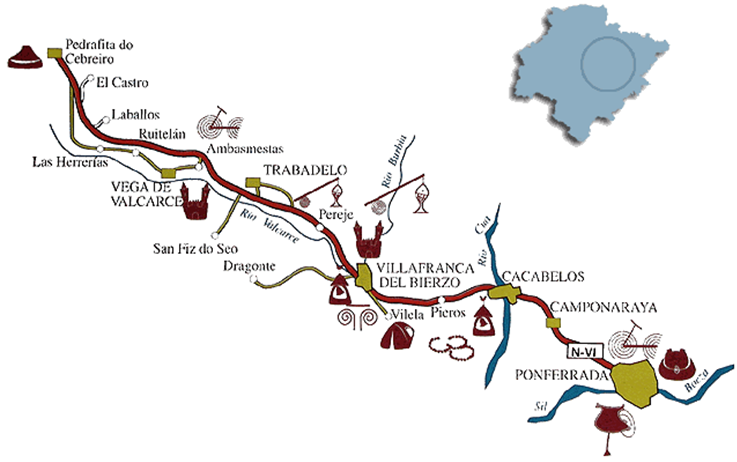The WineCellar
At the foot of the Camino de Santiago,
stands an eighteenth century manor mansion with large rooms and high ceilings. Its founders understood the art of winemaking, and the mansion’s floor has been stained thousands of times by the Mencía grapes. After having been abandoned for several decades, the mansion that was once a winery can now be returned to its greatness. The space is truly perfect. In 2003, Martin Códax found a home for its Cuatro Pasos.
The manor’s stables have given way to new machinery that stand next to the concrete tanks used when aging the wine. New and old come together to yield the greatest results. The spirit that was lost is now present again. You can smell the wine. There’s nothing like feeling you get in that mansion.


The discovery of four bear footprints in a magnificent vineyard in the highest areas of the Bierzo inspired the name of this wine.
Four solid steps are necessary to reach excellence: the selection of the land, the care of the vine, a suitable climate and carefulness in the vinification.
TASTING NOTES

A 100% Mencía from young vineyards in the Bierzo’s valley, located in the areas of Otero and Villadecanes, with mineral and clay soils.
It is made a pre-fermentative maceration for 12-14 hours. The result is an elegant, fruity and crisp wines with floral hints enhancing the character of Mencía grape.
TASTING NOTES



Cuatro Pasos Black, 100% Mencía, is made from selected vines, with low yields, over 80 years old from slopes in Bierzo region.
After its vinification, it is aged for 7-8 months in French and American medium-toasted oak barrels of 225 l.
TASTING NOTES

Its old vines have already been farmed by many different generations. Its slate soils have witnessed the hard work of their people, as well as the enthusiasm and joy of the Young people.In the very heart of Bierzo, it can be found Otero where unique vineyards it is made Pizarras de Otero.
TASTING NOTES



Martín Sarmiento is made with a selection of the best mencía grapes from the centenary grapevines cultivated in El Bierzo’s mountain vineyards.
Once the alcoholic and malolactic fermentation are finished, a 12 months aging in french oak barrels is done to then, finish its production with a new aging in bottle, this time, for more than 24 months.
TASTING NOTES
Denomination of OriginBIERZO
The El Bierzo region is located in the province of Leon with a very peculiar geography. From its high plains to its high mountain areas, Bierzo is rich with vegetation. In 1989 Bierzo was officially recognised as a designation of origin but the production of wine that has been present for more than ten centuries linked to the Cistercian monasteries that stood at the foot of the Camino de Santiago.
El Bierzo is located northwest of Leon and has 38 municipalities. It borders Ourense, Lugo, Oviedo and Leon, and thus is the gateway to Galicia and Asturias.
The headquarters of the Denomination of Origin is located in Cacabelos, and the vineyards are well situated in the valley of the Sil or in the higher elevations of Bierzo.
The soils of Bierzo are mainly composed of shale and clay. The vineyards generally take root in moist, brown soil that is slightly acidic and does not contain carbonates.
The vines grow with most success in the low gradient areas where the vineyards are situated very close to rivers, or at altitudes between 450 and 1,000 meters with very steep terrain.
El Bierzo offers mild weather conditions throughout the year. The temperature is warm and humid, which play a great part in enriching the crop. Rainfall is around 721 mm and although the weather in winter is very similar to Galicia, the summer is more like that of the plateau, for its dryness. Thus, the average annual temperature is 12.4 º C, reaching 22 º C during the hot summer months.
Mencía and Grenache are the two main red wine grape varieties of Bierzo, while Doña Blanca and Godello are the two predominant whites. Aside from these grapes, this Denomination of Origin has also experimented with three other varieties: Tempranillo, Merlot and Cabernet Sauvignon.
The Mencía grape, which is the mail varietal of our wines, is aromatic, velvety and smooth. Though the variety lends itself to aging, Mencía rosés are very aromatic and fresh. The grape itself is a violet-blue color with a thick skin but soft pulp and comes in average size clusters.




